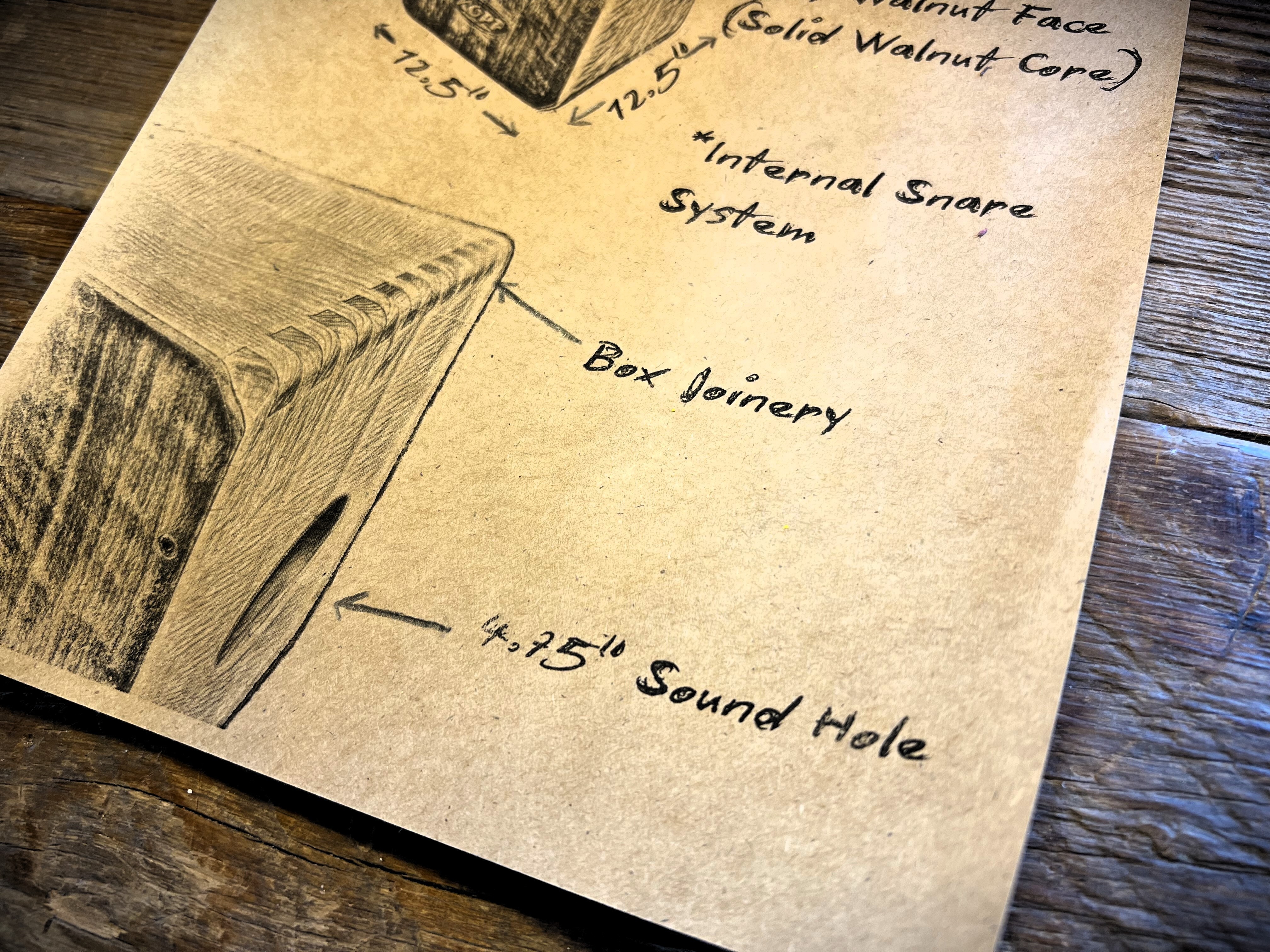Posted by Stephen Head on 16th May 2025
Understanding Clarity: What Affects the Clarity of a Cajon?
When it comes to the sound of a cajon, clarity is one of the most important aspects, particularly for players who want every note and nuance to be heard clearly. Clarity in a cajon’s tone refers to how distinctly the different sounds—such as the bass, snare, and mid-range tones—are articulated and separated from one another. A cajon with high clarity allows for precise, well-defined sounds that are free from muddiness or unwanted overtones. I’ve focused extensively on achieving clarity in my cajons. In this blog post, I’ll explore the factors that affect the clarity of a cajon and how these elements can be optimized to achieve the perfect sound.
1. Material of the Tapa
- Impact on Clarity: The material used for the tapa, or front playing surface, is crucial in determining the clarity of a cajon’s sound. Harder woods like birch or maple are often chosen for their ability to produce bright, clear tones with a sharp attack. These woods have a dense grain structure that minimizes unwanted overtones and emphasizes the primary tones, resulting in a sound that is crisp and well-defined. Softer woods like mahogany or cedar, while offering warmth and resonance, might introduce more overtones, potentially reducing the clarity. To learn more about overtones, check out Understanding Overtones: What Affects the Overtones in a Cajon?
- Example: At Kopf Percussion, I often use birch for tapas in models designed for clarity. Birch’s ability to produce a clear, articulate sound makes it ideal for genres where precision and clarity are essential, such as Flamenco or pop music.
2. Thickness of the Tapa
- Impact on Clarity: The thickness of the tapa also plays a significant role in shaping the clarity of the cajon. A thinner tapa allows for more vibration and resonance, which can introduce additional overtones and potentially muddle the sound. A slightly thicker tapa, however, provides more control over the vibrations, reducing overtones and enhancing the clarity of each note.
- Example: For musicians seeking a cajon with high clarity, I might recommend a slightly thicker tapa, depending on the species of the material being used, to help focus the sound and minimize any extraneous vibrations that could interfere with the crispness of the tones.
3. Body Material and Construction
- Impact on Clarity: The material and construction of the cajon’s body are also critical factors in determining clarity. Dense woods like walnut or maple are preferred for their ability to produce a tight, focused sound with minimal unwanted resonance. The construction of the cajon, including the thickness of the walls and any internal bracing, can also affect clarity by controlling how sound waves move within the instrument and minimizing any potential muddiness in the sound.
- Example: At Kopf Percussion, I use high-quality hardwoods and carefully designed internal structures to ensure that the cajon delivers a clear, well-defined sound. The internal construction is designed to minimize unwanted resonances and focus the energy of each strike, resulting in a sound that is both clear and articulate.
4. Size and Shape of the Cajon
- Impact on Clarity: The overall size and shape of the cajon can influence its clarity. A smaller cajon with less internal volume typically produces a more focused sound, as there is less space for sound waves to bounce around and create resonances. The shape, particularly the depth and width of the cajon, can also affect how sound waves are projected and how clearly the different frequencies are separated.
- Example: I design each cajon with specific dimensions to optimize clarity. A more compact cajon might be ideal for players who prioritize clarity and precision, as it can produce a tight, focused sound that allows each note to be heard distinctly.
5. Snare System and Its Impact on Clarity
- Impact on Clarity: The snare system inside the cajon can either enhance or detract from the clarity of the sound. A well-balanced snare system that is properly adjusted can add a sharp, articulate snare sound that complements the bass tones without interfering with the overall clarity. However, if the snares are too loose or too prominent, they might introduce a buzzing sound that muddies the clarity.
- Example: In my S-Series Snare Cajons, the snare system is carefully set to ensure that it complements the clear, articulate tones that define the cajon’s sound. The snare effect is designed to enhance the overall clarity without overwhelming the primary tones.
6. Sound Hole Size and Placement
- Impact on Clarity: The size and placement of the sound hole are key factors in shaping the clarity of the cajon’s sound. A larger sound hole allows more air to escape, which can reduce resonance and enhance clarity by minimizing the potential for low-end muddiness. Conversely, a smaller sound hole retains more of the bass frequencies, which might affect the clarity if not properly balanced. The placement of the sound hole, typically at the back of the cajon, also affects how the sound is projected and how clearly the different frequencies are separated.
- Example: At Kopf Percussion, I experiment with different sound hole designs to achieve the optimal balance of clarity and projection. A strategically placed sound hole can enhance the clarity of the cajon’s tone, making each note stand out clearly.

Conclusion: Enhancing the Clarity of Your Cajon
Clarity is a crucial characteristic of a cajon’s tone, allowing the instrument to produce precise, well-defined sounds that stand out in any musical context. By understanding what affects the clarity—such as the materials used, the construction, and your playing technique—you can tailor your instrument’s sound to achieve the crisp, articulate tones you’re looking for. Want to go even deeper? I also wrote about what affects the depth of a cajón.
At Kopf Percussion, I’m dedicated to crafting cajons that offer the perfect balance of clarity, tone, and resonance. Each cajon is designed with careful attention to detail, ensuring that you get the best possible sound for your music. If you’re interested, please consider exploring my collection of handcrafted cajons. Let’s work together to create the perfect clarity for your playing style.


